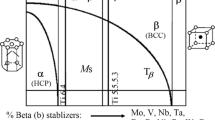Abstract
Nickel-based alloy is difficult-to-machine because of its low thermal diffusive property and high strength at higher temperature. The machinability of nickel- based Hastelloy C-276 in turning operations has been carried out using different types of inserts under dry conditions on a computer numerical control (CNC) turning machine at different stages of cutting speed. The effects of cutting speed on surface roughness have been investigated. This study explores the types of wear caused by the effect of cutting speed on coated and uncoated carbide inserts. In addition, the effect of burr formation is investigated. The chip burr is found to have different shapes at lower speeds. Triangles and squares have been noticed for both coated and uncoated tips as well. The conclusion from this study is that the transition from thick continuous chip to wider discontinuous chip is caused by different types of inserts. The chip burr has a significant effect on tool damage starting in the line of depth-of-cut. For the coated insert tips, the burr disappears when the speed increases to above 150 m/min with the improvement of surface roughness; increasing the speed above the same limit for uncoated insert tips increases the chip burr size. The results of this study showed that the surface finish of nickel-based alloy is highly affected by the insert type with respect to cutting speed changes and its effect on chip burr formation and tool failure.
Similar content being viewed by others
References
E. O. Ezugwu, Key improvements in the machining of difficult-to-cut aerospace superalloys, Int. J. Mach. Tool Manu. 45(12/13) (2005) 1353–1367.
G. Byrne, D. Dornfeld and B. Denkena, Advancing Cutting Technology, Annals of the CIRP, 52/2 (2003) 483–507.
L. Settineri and R. Levi, Surface properties and performance of multilayer coated tools in turning Inconel, Annals of the CIRP, 54/1 (2005) 515–518.
Narutaki, N., Yamane, Y., Hayashi, K., Kitagawa, T., Uehara, K., “High-speed machining inconel 718 with ceramic tools, Annals of the CIRP, 42/1 (1993) 103–106.
J. Vigneau, P. Bordel and A. Leonard, Influence of the microstructure of the composite ceramic tools on their performance when machining Nickel alloys, Annals of the CIRP, v 36/(1987) 1:13–16.
Machining data handbook, Mectcut Research Associate Inc., Cincinnati (1980).
Sandvik Coromant, Gas turbine-Application guide, C-2920:18-EN/01.
R. Arunachalam, M. Mannan and A. Spowage, Surface integrity when machining age hardened Inconel 718 with coated carbide cutting tools, Int. J. of Mach. Tools and Manuf., 44/14:1 (2004) 481–1491.
D. Axinte, M. Axinte and J. D. T. Tannock, A multicriteria model for cutting fluid evaluation, Proceedings of the IMECHE Part B, Journal of Engineering Manufacture, 217/10 (2003) 1341–1353.
M. C. Shaw, Metal cutting principles, Clarendon Press-Oxford (1984).
E. M. Trent, Metal cutting, Butterworths (1984).
D. A. Axinte, P. Andrews, W. Li, N. Gindy and P. J. Withers, Turning of advanced Ni based alloys obtained via powder metallurgy route, Annals of the CIRP, 55/1 (2006).
K. Komvopoulos and S. A. Erpenbeck, Finite element modeling of orthogonal metal cutting, Journal of Engineering for Industry, 113 (1991) 253–267.
Deng Jianxin and Ai Xing, Wear behavior and mechanisms of alumina-based ceramic tools in machining of ferrous and nonferrous alloys, Tribology International, 30 (1997) 11.
SANDVIK coromant, Main catalogue, 2009.
Ibrahim Ciftci, Machining of austenitic stainless steels using CVD multi-layer coated cemented carbide tools, Tribology International, 39 (2006) 565–569.
M. Kronenberg, Analysis of initial contact of milling cutter and work in relation to tool life, ASME, 68 (1946) 217–228.
David A. Stephenson, John S. Agapiou, Metal cutting theory and practice, Mercel Dekker, INC, (1997).
Prof. Dr. Ulvi Seker, Assist. Prof. Dr. İhsan Korkut, Yakup Turgut, Mehmet Boy, The measurement of temperature during machining, Gazi University web publications, (2008).
Author information
Authors and Affiliations
Corresponding author
Additional information
This paper was recommended for publication in revised form by Associate Editor Dae-Eun Kim
Basim A. Khidhir, PhD candidate 2008, MSc production engineering (Metal Cutting) 1992; BSc Production engineering (metal cutting) 1985. Senior lecturer in Sulaimanyah Technical College. He has published many papers in different journals in the field of metal cutting.
Bashir Mohamad, PhD Mechanical Enginering 1995; BSc Mechanical Engineering 1981. Associate Professor in Universiti Tenaga Nasional, Malaysia. He has published many papers in different journals in the field of manufacturing and metal cutting.
Rights and permissions
About this article
Cite this article
Khidhir, B.A., Mohamed, B. Study of cutting speed on surface roughness and chip formation when machining nickel-based alloy. J Mech Sci Technol 24, 1053–1059 (2010). https://doi.org/10.1007/s12206-010-0319-2
Received:
Revised:
Accepted:
Published:
Issue Date:
DOI: https://doi.org/10.1007/s12206-010-0319-2




